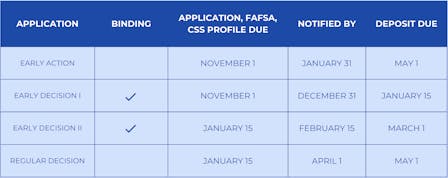Analysis of Early Action, American University’s newest application method

Beginning in fall 2024, American University will offer an Early Action application plan in addition to Regular Decision, Early Decision I, and Early Decision II options.
Most schools have one, two, or sometimes even three application plans. By implementing the university’s Early Action program, which now offers applicants four application options, AU can compete with comparable institutions and has more time to connect with applicants.
This new option is “essentially just early regular decision,” said Jeremy Lowe, assistant provost for undergraduate admissions. The option allows prospective students to apply earlier and receive earlier notification without contractually committing to attend after acceptance, as is the case with an early decision application.
By offering early admission, the university hopes to both compete with peer schools that already offer early admission – schools where students typically apply in parallel with their applications to AU, such as the University of Maryland, Fordham University, Pennsylvania State University, Northeastern University and others – and give students and their families more time to consider an admission offer, Lowe said.
The Early Action application follows an earlier Timeline than regular decision, where students must submit their application by November 1. They must also submit their FAFSA and CSS Profile, a financial aid form created by the College Board, by that date to be considered for financial aid.
Students will then be notified of their decision and financial aid offer by the end of January, approximately two months earlier than a regular decision offer. Early Decision I admission offers are announced by the end of December, and Early Decision II admission offers are announced by mid-February.
Unlike early decision, an early action application does not necessarily mean the student is choosing AU as their first choice. Lowe said early action applications are likely not automatically accepted as proof of interest like early decision applications are. He added that while the university still takes the interest shown into account, it is not as important in evaluating an applicant as it once was.

Offering early admission provides another important benefit, says Lowe: applicants are offered something that they are familiar with from what other universities have to offer.
“It makes sense that we’re trying to stay competitive and offer applicants something they already expect in an early action plan,” he said. “And for students, the benefit is that they have more time to think about an offer because they have those extra weeks — whether they want to visit campus or (if) affordability is really at the forefront, (it) gives them more time to consider the cost of college as they weigh their options.”
Lowe said the university’s admissions office had been toying with the idea of adding an early registration option for years, but began thinking about it more seriously last fall.
The university participated in a pilot program this year with the Common App, which allowed it to examine aggregated data from partner schools. Using that data, Lowe said, AU found that those similar schools received “a far greater share of their applicant pool” applying early.
“Because we only offer regular decision and early decision, we had a much smaller (early decision) pool and then a huge regular decision pool,” Lowe said. “By doing early decision, we can structurally spread out our applications a little more and give our team a little more time to review, which would be nice.”
To accommodate the earlier reading phase of applications, Lowe said the office recommends that admissions counselors complete their mobile recruitment for the fall earlier so they are ready for reading training in mid-October.
Given the Budget deficit Due to declining enrollment numbers, both graduate and undergraduate admissions – which are handled by separate offices – are pushing to meet enrollment goals. And while undergraduate numbers increased between fall 2022 and fall 2023, incorrect and late FAFSA led to a dramatic drop in enrollment across the country. This also affected enrollment at AU. A May email from the Board of Trustees stated that enrollment fees had dropped by 11 percent.
Still, Lowe said he doesn’t see early registration as a “one size fits all solution to the problem of enrollment goals.” The main benefit, he said, is not that AU will see an increase in the overall number of applications, but that the university will have more time to connect with families and accepted students before they have to make their decision.
“If you give families more time to plan and we can serve admitted students over a longer period of time, that’s a huge benefit to us,” he said. “One of the things we know is that admitted students are more likely to accept our offer if they visit our campus, contact us to attend events for admitted students in their area, or participate in virtual programs — that’s a good thing.”
This article was edited by Olivia Wood, Tyler Davis, and Abigail Turner. Proofreading was done by Luna Jinks, Ella Rousseau, and Ariana Kavoossi.



